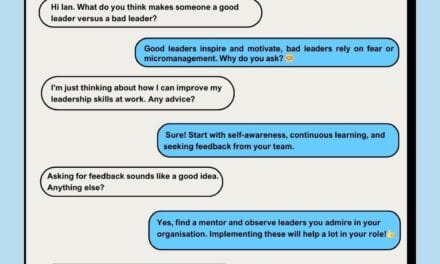Small business owners face numerous challenges in today's competitive landscape, where effective leadership can make all the difference in driving success. The quest for engaging leadership resources for small business owners is more critical than ever as it directly impacts team productivity, innovation, and overall company growth. In this blog post, we delve into the realm of leadership development and explore innovative strategies, tools, and techniques tailored to empower small business owners in cultivating engaging and impactful leadership within their organisations. Let's embark on a journey to unlock the secrets of effective leadership that can propel small businesses towards sustainable growth and success.
Identify the Key Characteristics of Engaging Leadership Resources for Small Business Owners
Importance of Engaging Leadership in Small Business Success
Effective leadership is the cornerstone of small business success. Engaging leadership goes beyond mere management; it involves inspiring, motivating, and empowering teams towards shared goals.
Essential Qualities of Engaging Leadership Resources
Clear Communication: Leaders who can articulate a compelling vision and foster open dialogue with their teams.
Emotional Intelligence: Understanding and managing emotions to navigate interpersonal relationships effectively.
Adaptability: Being able to pivot strategies and approaches in response to changing business landscapes.
Case Studies Demonstrating the Impact of Effective Leadership Resources
For example, company X implemented a leadership development programme focusing on empowering middle managers. As a result, employee satisfaction increased by 20%, leading to a 15% boost in overall productivity.
For more insights on leadership success stories, check out this case study from Google.
Exploring Innovative Tools and Technologies for Engaging Leadership in Small Businesses
Overview of Digital Tools for Leadership Development
In the digital age, small business owners have access to a wide range of tools and technologies to enhance their leadership skills. These tools can streamline processes, provide data-driven insights, and facilitate remote leadership development programmes.
Integrating Technology into Leadership Training Programs
Online Learning Platforms: Platforms like Coursera and Udemy offer courses on leadership and management tailored to small business needs.
Virtual Leadership Assessments: Tools like DISC assessment can help leaders understand their behavioural styles and adapt their communication strategies accordingly.
Project Management Software: Platforms like Asana and Trello can enhance team collaboration and task management, improving overall leadership efficiency.
Benefits and Limitations of Tech-driven Leadership Resources
While tech-driven resources offer scalability and accessibility, they may lack the personal touch of traditional leadership development methods. It's essential for small business owners to strike a balance between utilising technology and maintaining human connection in their leadership approach.
Strategies for Implementing Engaging Leadership Resources in Small Businesses
Creating a Leadership Development Plan
Developing a comprehensive leadership development plan is crucial for small business owners looking to foster engaging leadership within their organisations. This plan should outline specific objectives, timelines, and metrics for success.
Training and Mentoring Programmes for Small Business Leaders
Leadership Workshops: Hosting workshops on effective communication, conflict resolution, and decision-making can enhance leadership skills.
Peer Mentoring: Pairing leaders with experienced mentors within or outside the organisation can provide valuable insights and guidance.
Continuous Learning: Encouraging leaders to engage in ongoing training programmes and industry seminars to stay updated on best leadership practices.
Monitoring and Evaluation for Continuous Improvement
Regularly monitoring the implementation of leadership resources and evaluating their impact is essential for continuous improvement. Feedback mechanisms, performance reviews, and data analytics can help small business owners assess the effectiveness of their leadership strategies and make necessary adjustments.
Leveraging Team Dynamics and Communication for Effective Leadership Resource Utilisation
Building Strong Team Relationships through Communication
Effective communication is the bedrock of strong team dynamics. Small business owners should focus on creating open and transparent communication channels to foster trust, collaboration, and alignment towards common goals.
Encouraging Collaborative Leadership Practices
Shared Decision-making: Involving team members in decision-making processes empowers them and encourages ownership of outcomes.
Team-building Activities: Organising team-building exercises and offsite retreats can strengthen relationships and improve teamwork.
Feedback Culture: Encouraging regular feedback loops promotes continuous improvement and helps address any communication gaps within the team.
Empowering Employees through Transparent Communication Channels
Transparency in communication leads to increased trust and engagement among employees. Utilising tools like Slack for real-time messaging, Zoom for virtual meetings, and project management platforms like Basecamp can enhance communication efficiency and effectiveness.
For more insights on effective team communication, refer to this resource from Microsoft.
Measuring the ROI of Engaging Leadership Resources for Small Business Owners
Key Performance Indicators for Assessing Leadership Development
Small business owners should establish key performance indicators (KPIs) to evaluate the effectiveness of their leadership resources. These KPIs may include employee engagement levels, retention rates, productivity metrics, and leadership skills assessments.
Calculating the Impact of Leadership Resources on Business Growth
Financial Metrics: Tracking the impact of leadership development on revenue growth, cost savings, and profitability.
Employee Satisfaction Surveys: Gathering feedback from employees on their perception of leadership effectiveness and development opportunities.
Succession Planning: Assessing the readiness of future leaders within the organisation to ensure continuity and sustainability.
Strategies for Enhancing ROI through Continuous Learning and Development
Investing in ongoing leadership training and development programmes can yield long-term benefits for small businesses. Encouraging leaders to participate in industry conferences, executive coaching sessions, and peer learning groups can foster a culture of continuous improvement and innovation.
To explore more about measuring leadership ROI, refer to this resource from Apple.
FAQ
What are the key characteristics of engaging leadership resources for small business owners?
Engaging leadership resources for small business owners typically encompass qualities such as effective communication, emotional intelligence, adaptability, and a focus on fostering strong relationships within the team.
How can small business owners integrate technology into their leadership development programmes?
Small business owners can integrate technology into leadership development by utilising online learning platforms, virtual leadership assessments, and project management software to enhance leadership skills and efficiency.
What are some strategies for implementing engaging leadership resources in small businesses?
Strategies for implementing engaging leadership resources include creating a leadership development plan, offering training and mentoring programmes, and establishing monitoring and evaluation mechanisms for continuous improvement.
How can team dynamics and communication be leveraged for effective leadership resource utilisation?
Building strong team relationships through transparent communication, encouraging collaborative leadership practices like shared decision-making and team-building activities, and empowering employees through communication channels are key strategies for effective leadership resource utilisation.
How can small business owners measure the ROI of their engaging leadership resources?
Small business owners can measure the ROI of engaging leadership resources by defining key performance indicators, calculating the impact on business growth through financial metrics and employee satisfaction surveys, and enhancing ROI through continuous learning and development initiatives.





